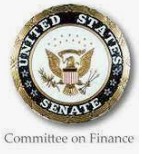 Wikipedia, the free online encyclopedia, defines the word “proactive” as originally coined by the psychiatrist Victor Frankl …and… popularized in the business press in Stephen Covey’s 7 Habits of Highly Effective People …and… the word has come to mean “to act before a situation becomes a source of confrontation or crisis” vs. after the fact.”
Wikipedia, the free online encyclopedia, defines the word “proactive” as originally coined by the psychiatrist Victor Frankl …and… popularized in the business press in Stephen Covey’s 7 Habits of Highly Effective People …and… the word has come to mean “to act before a situation becomes a source of confrontation or crisis” vs. after the fact.”
Executive Summary
BEING PROACTIVE WITH tax risk management requires decisive steps to be taken by the BO / CFO, with the tax manager. The steps include: forming a tax team under the leadership of the legal team to ensure legal privilege, plotting a tax risk management strategy, and then determining what the on and off-the-radar screen issues are. The aim of the process is to eliminate the tax risks before they become disputes, obtaining resolution through the IRS representative sign-off, moving towards a soft outcomes solution to any tax risk management issues. With the completion of the process, the taxpayer’s ability to tax plan into the future increases proportionately.
Introduction
THIS CHAPTER DEALS with Tax Risk Management Step 1.
Taxpayers tend to be reactive to tax problems and tax risks. This will translate into additional tax exposure through the imposition of tax penalties and interest, and lead to poor relationships with the IRS. Proactive tax risk management will eliminate the additional tax exposure, improve IRS relationships, and place control of the tax risk management process back in the hands of the business, and not the IRS. This then translates into a golden opportunity to develop an ongoing tax planning process, to keep tax exposures under control, and in a proactive manner.
Incriminating Evidence
“JUDGE, MAY I present the overwhelming evidence that tilts the balance of the probability scale in favor of the proposition that tax is one of the most significant risks facing businesses, and that, viewed from different perspectives, the clear conclusion to be drawn is that corporate officers display a laissez-faire attitude towards the inherent danger tax risk poses to the fortunes of shareholders and business owners, despite an attempt by numerous regulators to arrest the problem”.
In an online survey conducted on what were the main causes of material weakness disclosures to the SEC in the USA under SOX 404 (see Chapter 8), nearly 30% of all reports showed problems with tax accounting. The highest material weakness!
FIN 48 and IFRS (see Chapter 8) require companies to determine their tax liabilities and disclose these in their financial statements, despite the fact that the actual liability may only arise in the future. Failure to quantify such a tax liability will result in qualified or inaccurate financial statements. This in turn will cause repercussions under SOX 404 for companies trading their stocks on the USA stock markets.
A large international accounting firm tax risk specialist has suggested in a paper by one of its leading tax risk specialists, that as much as 75% of businesses tax risk remains outside the accepted realm of tax compliance.
This was the cased a few years ago. Well the regulators got their way, and it seems that big business is complying. So the problem for small businesses is that IRS audits are now being focused on smaller businesses.
_______________________________________________________________________
The degree of inattention to tax risk management
IN AN ONLINE Tax Risk Management survey conducted by over 167 member businesses, the results showed that both small and big businesses are generally not on top of their tax risks and there are many.
The evidence is overwhelming enough to convince any CEO, BO / CFO, board of directors, audit committee or tax manager that tax risk should be a major concern for most businesses, requiring proactive attention on an ongoing basis.
Tax, if managed reactively, will remain a dangerous problem, difficult to manage when liabilities are unexpectedly uncovered.
______________________________________________________________
The case of K Products Ltd
THE CASE OF K Products Ltd illustrates the difference between reactive and proactive tax risk management.
K Products Ltd had inherited a number of merger transactions over the years that the IRS, through one of their Special Investigations Units, had audited and now decided to issue revised tax assessments totaling hundreds of millions of dollars, including penalty tax and interest. The outside advisory team that had dealt with the process had advised K Products Ltd to keep the interaction with the IRS to a minimum, and not to divulge or disclose too many facts, as the opportunity would arise in the future when the matter went to tax court. As a result, many opportunities, that existed prior to the raising of the revised assessments, were lost in convincing the IRS that nothing was wrong with some of the merger transactions. The IRS had also failed to follow certain important legal procedural rules in arriving at their decisions, which could have resulted in any steps taken by them to raise the revised tax assessments being overturned.
As a result, the revised tax assessments were raised, and K Products Ltd now had to face the music of raising formal written objections against the revised tax assessments, and to fight off the tax collection authorities, who were now attempting to extract the hundreds of millions of dollars out of them, pending the finalization of the tax court case at some uncertain point in the future. In fact, shortly after the assessments were raised, K Products Ltd ended up paying a fairly large “goodwill” sum, pending the outcome of the dispute in the tax court. It was clear that the IRS would attempt to extract more money in the near future from them.
To add fuel to the fire, the media had also been given a statement on the tax position of K Products Ltd, and investor analysts were concerned.
The entire process had been followed in a reactive manner. Each time the IRS took a step, the advisory team waited, then reacted cautiously, without making too many disclosures for fear of causing some advantage in favor of the IRS. The result: the process quickly followed the usual route to revised tax assessments, with K Products Ltd being placed under pressure to enter the formal tax dispute arena, and start paying the revised assessed taxes, as the amounts were now final debts due to the State, until the revised tax assessments were overturned by a tax court at a later stage.
Shortly after this gut wrenching process had come to a head, the BO / CFO of the company decided to try a different approach for the remainder of the tax risks inside K Products Ltd, which they were also still trying to handle, with imminent revised assessments about to be issued.
An immediate tax team was formed, comprising the BO / CFO, the tax manager, the current outside tax advisors and a new legal team, qualified to handle a process of this nature.
The first meeting was called, and all the tax issues were tabled and summarized in tabular form. The matters were ranked according to priority.
Time lines were attached to each of the tax risk items, with a summary of what had to be done to bring the matters to finality. The capital tax, penalties and interest for each tax risk item were determined, subject to legal privilege, under the guidance of the legal team. One of the first strategies that would be embarked upon would be to minimize any penalty or interest exposure to the IRS. This required careful preparation, drafting the suitable presentation to the IRS and involving opinion sign-off, soft outcomes and IRS sign-off.
The roles and responsibilities of the various tax team members were carefully determined.
The first task was to make contact with a neutral individual in the IRS to go and see the IRS representative. An agenda was agreed upon, which included the historical dispute issues, regarding the current on-the-radar screen issues, and the proposed way to go forward. At the same time, the IRS representative was asked to determine from their systems all outstanding tax returns and tax queries that appeared on their internal system. This would be used as the first item to be cleared with the IRS to show good faith on the part of K Products Ltd.
The first meeting took place. The result was the handing over of a list of outstanding tax issues to K Products Ltd, an agreement on the method to be adopted in arriving at conclusions of tax audits before revised tax assessments were raised, and the fact that the historical disputes would be dealt with separately by the tax advisors who were originally involved. One important concession was agreed upon: the fact that K Products Ltd was embarking on an overhauling of all its issues was acknowledged by the IRS, all payments on revised assessments and the issuing of revised tax assessments would be suspended, as K Products Ltd was given a fair and reasonable opportunity to systematically work through its tax risk issues with the IRS. It was agreed in principle that soft outcomes would be sought ultimately, with the view to obtaining the IRS sign-off on any disputes that may arise, without resorting to unnecessary litigation. It was also agreed that the “Pay-Now-Argue-Later” principle, if any revised assessments were raised, would be suspended until the IRS sign-off took place at the end of a tax dispute. This meant that any payments under revised tax assessments would be suspended until the final conclusion of the tax dispute.
It was also agreed that the TQQ questions could be issued by the taxpayer on any investigations conducted by the IRS, to ensure there was proper procedural compliance by them. Any audit would also end with the appropriate letter of findings, before a revised assessment was issued by the IRS.
A structured and fair tax risk management process, with the participation of the IRS, could now be embarked upon.
The next step in the process was to get the tax team together so as to formulate an overall strategy for the company to take care of the historical, current and future tax risk issues, including any off-the-radar screen tax risk issues.
Eighteen months later, K Products Ltd had paid no more revised tax assessment monies. No further revised assessments had been raised, and matters were well under way towards bringing most of the on-the-radar screen issues to a conclusion with IRS sign-off. In appropriate places the IRS had issued letters of findings. In addition to this, a number of proposed tax audits had been done away with and postponed, taking immediate pressure off K Products Ltd to commit more resources to the IRSs demands. K Products Ltd was now also able to finally start collating and analyzing information on some of its off-the-radar screen issues, under legal privilege, without fear that the IRS would demand sensitive information before it was due to be disclosed to them at the conclusion of the process.
The final goal was also about to be reached: high and lower level settlement discussions with the IRS to reach soft outcomes on most of the outstanding tax issues without resorting to tax litigation. The company was also properly prepared for the conclusion of the tax risk management process on this basis, having researched and investigated each tax issue thoroughly through the tax team and the tax risk management process.
The specific processes referred to in this case study will be discussed in greater detail throughout this Special Report.
In accordance with Circular 230 Disclosure




















Recent Comments